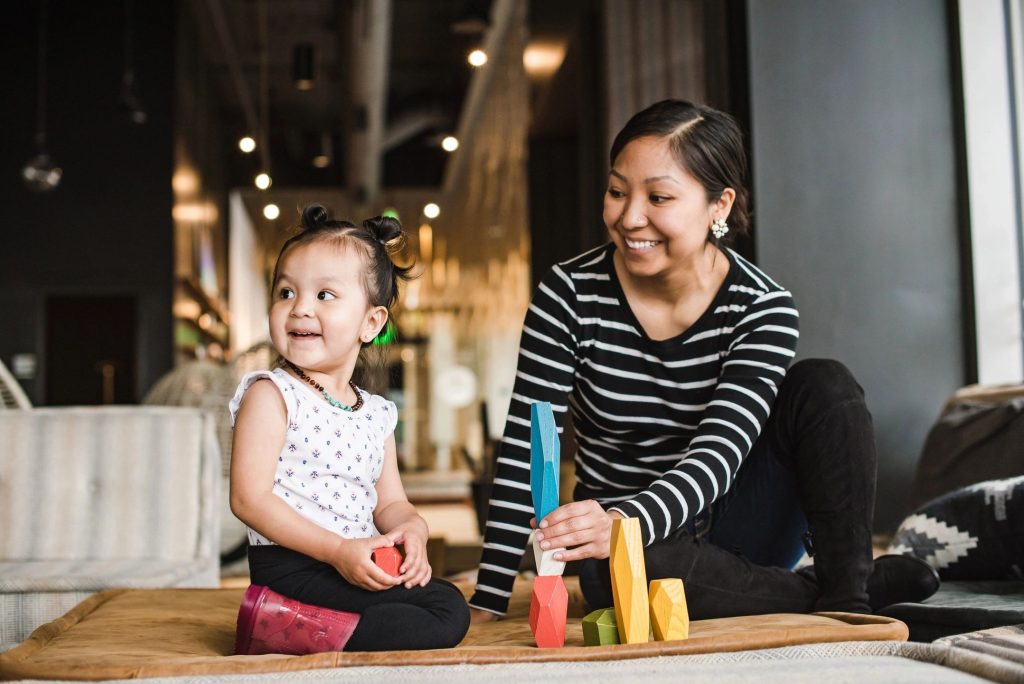Since the 1970s, the Census Bureau has produced yearly population estimates for states and counties for the decade following each Decennial Census. The estimates include the number of children (population ages 0 to 17) for states and counties. The estimation method used by the Census Bureau starts with a population base and then adds or subtracts estimated yearly incremental change to that base.
In the past, the Decennial Census counts have provided the estimates base, but the 2020 Census detailed data needed for the base was not available in time to use with the 2021 and 2022 population estimates so the Census Bureau staff developed a new PEP (Population Estimates Program) methodology called the blended base.
This paper is intended to provide guidance for child advocates, researchers, and data analysts on the potential impact of the Census Bureau’s new blended base methodology for the child population (ages 0 to 17) .
The PEP blended base produces somewhat different numbers than what would have been produced if the Census Bureau utilized the 2020 Decennial Census counts as they have done in the past. The differences between the 2020 Census counts and the PEP blended base have different implications for different populations. This study examines the implications for the child population (ages 0 to 17).
This report focuses on differences in the number and the national share of children between the PEP blended base and the 2020 Census counts. It does not address the accuracy of these two data series. It will be difficult to provide a definitive assessment of whether the Census count or the PEP blended base provides a more accurate reflection of the true number of children in states and counties. However, it will be much clearer which source of data provides a larger number and/or a larger national share of children for states and counties. This report focuses on the differences between these two sources of data on children.
There are two key measures used in this analysis. The first measure is the number of children in a given state or county, and the second measure is the share of the total U.S. child population in a given state or county. We call this second measure “national share.”
The analysis compares the number of children in a state or county from the 2020 Census to the PEP blended base, and also the share of all children in the nation that are in a given state or county. It is important to examine both the raw numbers and the share of the national population because the implications may not be the same. Just because the number of children in a state or county is higher in the PEP blended base compared to the Census, does not necessarily mean it is a larger share of the national population based on PEP or the Census because the total child population in PEP is different than the total child population in the Census count. There are likely to be times when the number of children is most important and other times when the share of the national population is more important in making a policy decision or in a funding formula. For example, the number of children will be the relevant number for decisions about how many children need services. But the share of the national number of children may be more relevant in allocating federal funds for programs for which a total dollar amount is appropriated federally, and then state or local data are used to determine what share of the total federal appropriation each state or community gets.
In terms of absolute numbers, the PEP blended base provided a larger number of children than the 2020 Census count nationally. At the national level, the number of children for April 1, 2020 from the PEP blended base was 74,385,212 compared to 73,106,000 in the 2020 Census. In other words, the number of children in the PEP blended base is 1,279,212 higher than the count in the 2020 Decennial Census for children. That amounts to a difference of 1.7 percent.
The PEP blended base estimates were larger than the 2020 Census counts in nearly every state (48 out of 50 states and DC). And 98 percent of the children in the U.S. lived in a state where the PEP blended base was larger than the 2020 Census counts. Assuming a higher number is better, for most states and most children using the PEP blended base would be more advantageous than using the Census count.
However, in terms of the national share of children in a state, the results are somewhat different. There are 35 states where the Census count is larger than the PEP blended base estimate in terms of national shares. Slightly more than half of all children (51 percent) lived in a state where the 2020 Census count provides a larger share of the national child population than the PEP blended base. From this perspective it may be more advantageous for most children if the 2020 Census counts were used instead of the PEP blended base.
The 2020 Census count is larger than the PEP blended base in 1,234 counties which are home to 22 percent of the nation’s children. On the other hand, there are 1,903 counties where the PEP blended base provides a larger number of children than the 2020 Census count and 78 percent of the national child population live in those counties.
Within states, the prevalence of a higher number from the PEP blended base for counties varies. For example, the PEP blended base number is larger than that 2020 Census in count 68 percent of the counties in Idaho compared to Hawaii and District of Columbia where none of the counties show a PEP blended base larger than the 2020 Census count.
When national shares were examined, we found the 2020 Census count larger than the PEP blended base in half (50 percent) of all counties, and these counties were home to 48 percent of the child population.
The findings here suggest that assessing the impact of the PEP blended base on the child population will be complicated. The PEP blended base numbers are larger than the 2020 Census counts nationally and in most states. But there are 1,234 counties where the 2020 Census counts are larger than the PEP blended base. It is clear that it matters whether one is looking at raw numbers or shares of the total U.S. child population.
The official population estimates from the Census Bureau are used for many different purposes. Perhaps the most important use of the population estimates is in the distribution of federal funds through funding formulas. Census Bureau data is used in 315 programs that distributed $1.5 trillion to states and localities in FY 2017. The population estimates are not only used by themselves in some funding formulas, but the population estimates are also used as control totals of the American Community Survey, so any funding formula that uses the ACS is indirectly influenced by the PEP population estimates. The connection between Census Bureau data and funding to states and localities is very complicated and beyond the scope of this study. It’s worth noting that each federal program has its own funding allocation formula, so changes might increase funds to a particular state or locality for some programs and decrease them for others.
This paper is meant to provide readers with some background regarding the decisions that will have to be made by the Census Bureau in the next year or so about the methodology for the PEP estimates for the remainder of the decade.









Count All Kids Steering Committee Response to Updated Standards for Race and Ethnicity Data Collection
Statement from the Count All Kids Steering Committee Members Response to U.S. Office of Management